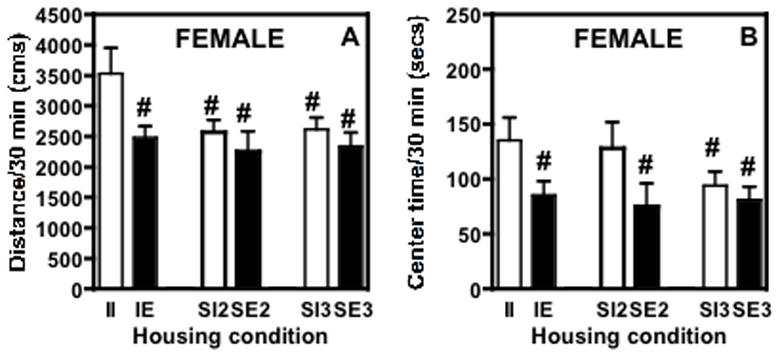Fig. 2.

Response to a novel environment on PND 37 (two weeks after housing) of female adolescent rats housed under different conditions, expressed as mean ± SEM. (A) Distance traveled in 30 min and (B) time (secs) spent in the center of the chamber/30 min. The rats were not habituated to the locomotor chambers (i.e. testing began immediately after the rats were placed in the chambers for the first time and the sessions lasted 30 min). (A) The II group exhibited significantly higher levels of activity than any of the other groups tested. (B) Both the II and SI2 rats spent more time exploring the center of the test chamber than any of the other groups. II = isolated impoverished (one rat/cage without toys, n=24) IE = isolated enriched (n=24; one rat/cage with toys); SI2 = social impoverished 2 (n=16; 2/cage without toys); SE2 = social enriched 2 (n=16; 2/cage with toys); SI3 = social impoverished 3 (n=24; 3 rats/cage, no toys); SE3 = social enriched 3 (n=24; 3 rats/cage, with toys). #significant difference from isolated impoverished rats (p ≤ 0.05).
